Rank Genus Higher classification True frog | Subphylum Vertebrata Scientific name Pyxicephalus Order Frog | |
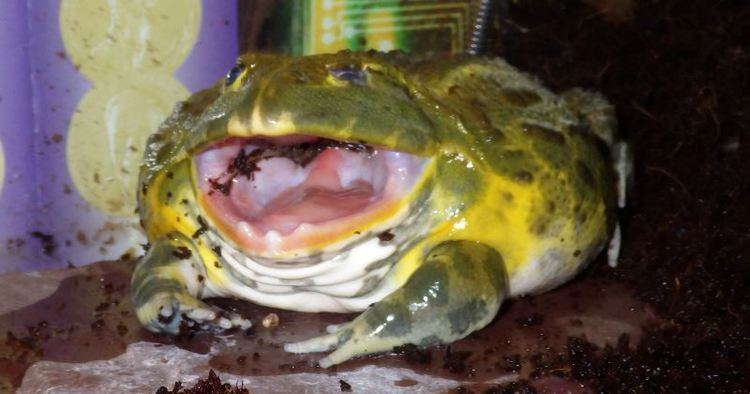 | ||
Lower classifications African bullfrog, Edible bullfrog, Calabresi's bullfrog | ||
Pyxicephalus (Pyxis = "(round) box," cephalus = "head") is a genus of true frogs from Sub-Saharan Africa, commonly referred to as African Bull Frogs. Also known as the Pixie frog, which was derived from its genus name. It is the largest frog in South Africa. It lives in open grasslands, can be found in puddles. In the dry season it burrows under ground. This frog eats insects of various kinds, fish, mice, lizards, and some times other frogs. If threatened the frog puffs up in an attempt to frighten the offender.
Contents
- Feeding my male african bullfrog pyxicephalus adspersus
- Physical characteristics
- Distribution and habitat
- Diet
- Behavior
- Reproduction and growth
- Conservation status
- Species
- References
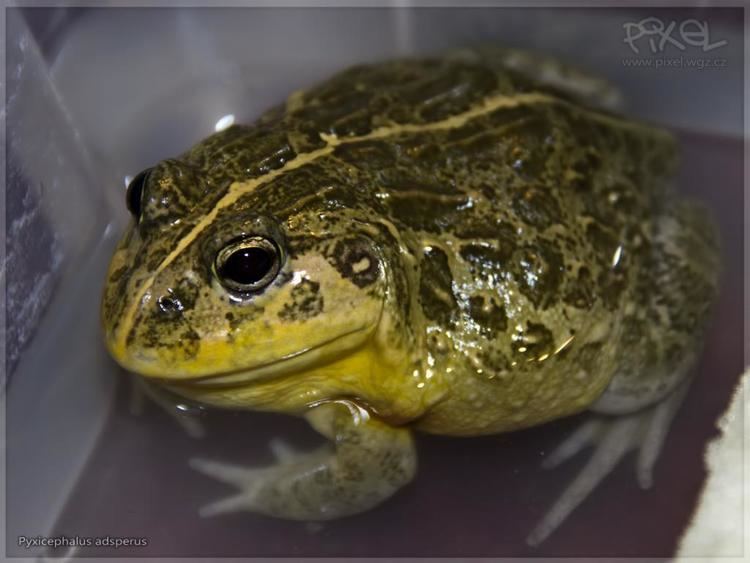
Feeding my male african bullfrog pyxicephalus adspersus
Physical characteristics
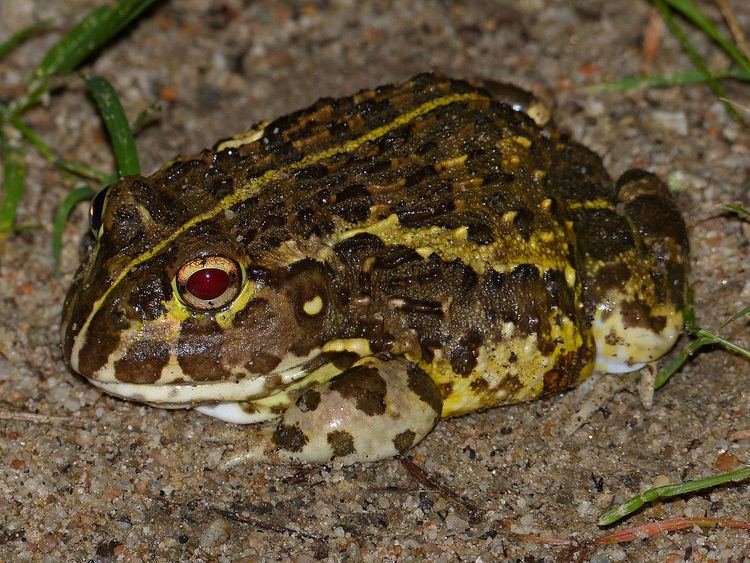
The most obvious characteristic that differentiates Pyxicephalus adspersus from other frogs is its size; it's one of the biggest, second only to Conraua goliath of the Congo basin. Individuals can weigh up to 2 kilograms (4.4 lbs). Unlike most other species of frog, the P. adspersus male is larger than the female. The male can be up to 24 cm (9.5 in.) long and the females are about 12 cm (4.45 in.). Their skin color is a dull green; the males have yellow throats and the females throats are cream-colored. Juveniles differ in that they are bright green and have a yellow stripe down their back. This stripe fades away as they mature in about one and a half to two years. Also, older frogs have more obvious skin folds than the younger ones.

The body of the frog is very broad, with a short rounded snout, protruding jaw, and tooth-like projections in its lower jaw. It has a large mouth, sharp teeth and very little webbing on its feet. Another way that this bullfrog differs from other frogs is that it has very strong hind legs, which it uses to dig holes in the ground, so that it can aestivate during the dry season. It makes a dry, watertight cocoon for itself, which prevents the evaporation of body fluids; it loses approximately half of the water that a frog without a cocoon would lose. The frogs can actually survive for several months in dry soil by absorbing water stored in the bladder. Once the rainy season starts, the moisture will seep into the ground and soak the cocoon. Once it softens enough to split open, the frog eats it.
Distribution and habitat
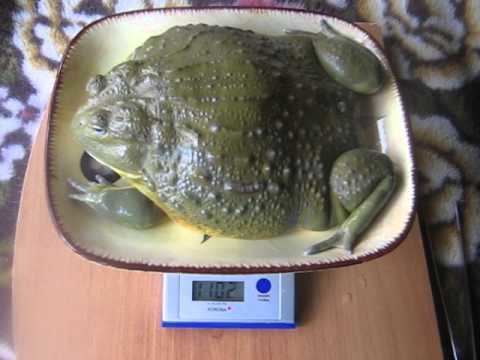
This type of frog is found mostly in open grasslands and at low elevations in the sub-Saharan African countries of Malawi, Zambia, Nigeria, Somalia, Mozambique, Angola, South Africa (except for the southwestern Cape Province), Kenya, Zimbabwe, Tanzania and the Sudan.
Diet
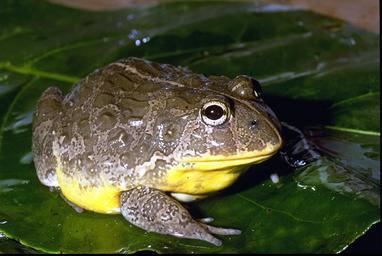
The African bullfrog is carnivorous. It will feed on anything it can fit into its mouth, including insects, small rodents (such as mice), reptiles, birds, and amphibians (including other frogs).
Behavior
It is quite aggressive, and has been known to jump at things that it views to be a threat. Because of its sharp teeth, its bite can be quite serious. The male bullfrog will also aggressively defend his eggs if an animal or a human should approach. The males make calls only during the rainy season, which is when they come out of aestivation to breed in pools of water. They tend to congregate around watering holes, including ones occupied by large animals like elephants. The call of Pyxicephalus adspersus is composed of loud, throaty bellows and deep grunts, and a higher pitched bleat when captured. These frogs can get rather territorial during mating and begin their mating calls only when they have established their territory. The African bullfrog can be quite lazy but will eat anything around it.
Reproduction and growth
The African bullfrog lays about three thousand to four thousand eggs in shallow water. The tiny eggs are only about 2 mm, are black and white and are encased in a 4 mm jelly capsule. These eggs hatch about 2 days after being laid. The tadpoles are fat, heart-shaped, grey to black in color and their eyes are very close together, situated on the top of their heads. About 18 days after hatching, the small frogs are 20 mm long and are able to leave the water to live on dry land. After this happens, these frogs have occasionally been known to eat each other. There is not a very good survival rate for these frogs; only about 20% of young adult females survive.
Conservation status
Pyxicephalus adspersus is not listed among the world's endangered species. Even though many indigenous peoples consider them to be a delicacy, their hunting has not had a significant effect on the size of the population.
